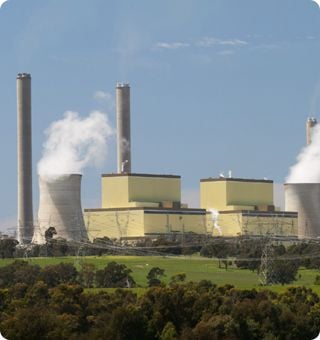Emssions Reduction Fund
)
Emissions Reduction Fund (ERF)
Assisting clients to participate in the ERF
The Australian Government has committed $2.55 billion towards funding of projects under the Emissions Reduction Fund (ERF). The ERF has been implemented by the Australian Government to help achieve Australia's 2020 emissions reduction target of a five per cent cut in greenhouse gas emissions below 2000 levels by 2020.
Challenge
The government has been clear that the ERF is a competitive fund, and auctions will be used to determine the lowest-cost emissions reductions projects. The first auction is in the first quarter of 2015. In addition to cost, the project must also demonstrate genuine and additional emissions reductions.
There is a five steps participation process:1. To participate in the Emissions Reduction Fund you will need to become an ERF participant and then register your project to receive credits under the ERF. Alternatively, you may also apply to open an account in the Australian National Registry of Emissions Units (ANREU). The Clean Energy Regulator (CER) will assess your application and if you are successful will then register your project.
2. To participate in an auction, you will need to submit information to the CER that describes your project, your capacity to carry out the project, and a total quantity and abatement delivery schedule.2a. The CER will select projects solely on the basis of the bid price. The CER has stated that 'The best strategy for succeeding at auction is for you to price your project realistically by bidding the lowest price at which it is worthwhile undertaking the project. Participants with the most competitive prices will be successful.'
3. If your bid is successful at an auction, you will enter into a contract with the CER.4. You will then undertake the project (including estimating abatement), while complying with the monitoring, record-keeping and reporting requirements according to the rules and instructions set out in the method for your project. Regular reports are required by the CER. Reports can be submitted as frequently as every six months or up to every two years (or five years for sequestration projects).
5. Finally, delivery and payment of Australian carbon credit units (ACCUs) according to the schedule in the contract.Solution
HRL Technology has a strong history of identifying opportunities to lower emissions and/or emissions intensity, and identifying practical and economical methods to improve accuracy in determining emissions including in the industry sectors targeted by the Emissions Reduction Fund (ERF):
- facilities (that produce a saleable product)
- wastewater treatment
- transport
- commercial building energy efficiency
- avoided clearing of native regrowth
- coal mining
- alternative waste treatment
- landfill gas.
HRL Technology can provide expert services to participating organisations to help them reduce their business risk under the ERF. HRL Technology's expert services can also assist clients to meet requirements for registration with preparation of submissions, and by reviewing and confirming greenhouse emissions estimates.
HRL Technology offers expertise in measuring generating-plant performance and emissions, identifying and implementing improvement actions, and preparing submissions and reports. HRL Technology has significant experience in conducting similar assessments under Energy Efficiency Opportunities and the Generator Efficiency Standards schemes.Benefits
Benefits to those participating in the Emissions Reduction Fund (ERF) program may include minimising carbon liability, increasing production efficiency, improved business planning and improved corporate image. HRL Technology comes from a strong engineering and technical perspective to assist in evaluating and implementing the more complex opportunities that have the greater efficiency potential.
HRL Technology assists clients to participate in the ERF.
) Author:Steven Kulibaba
Author:Steven Kulibaba| Tags:Environment |


























